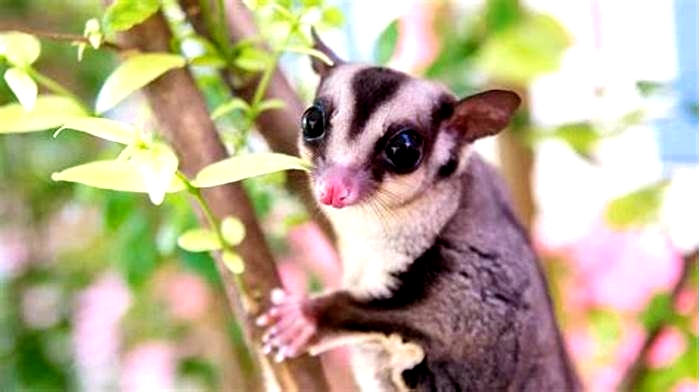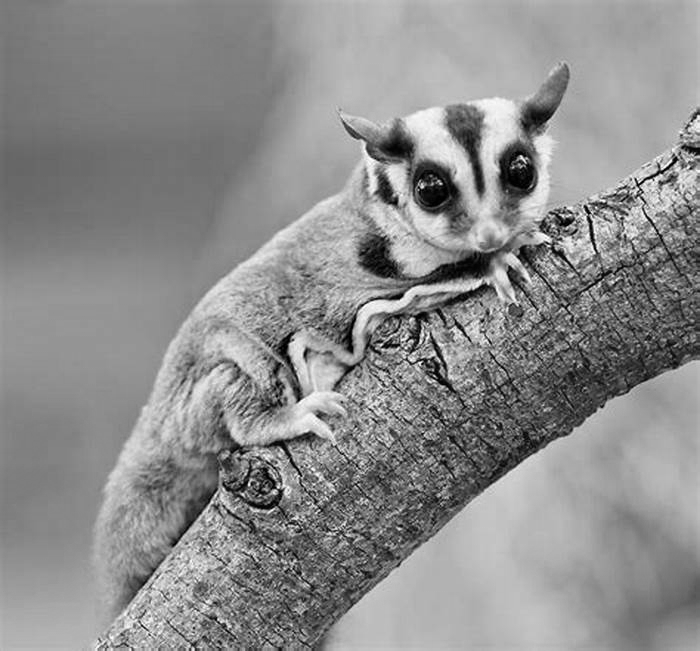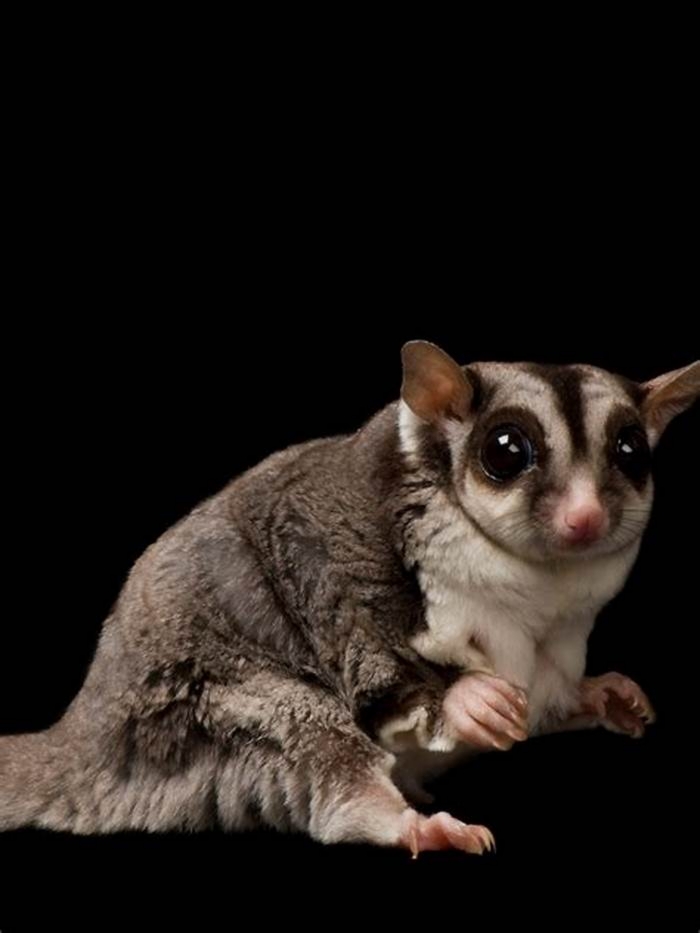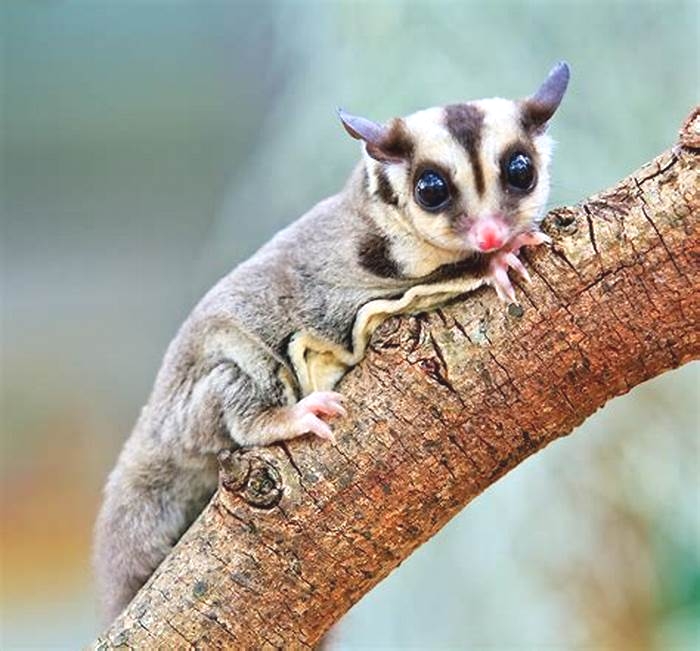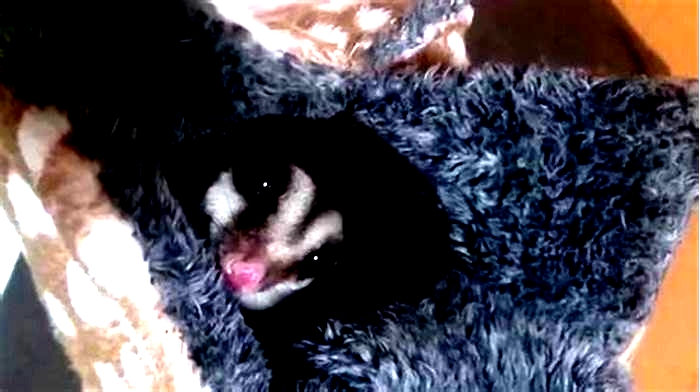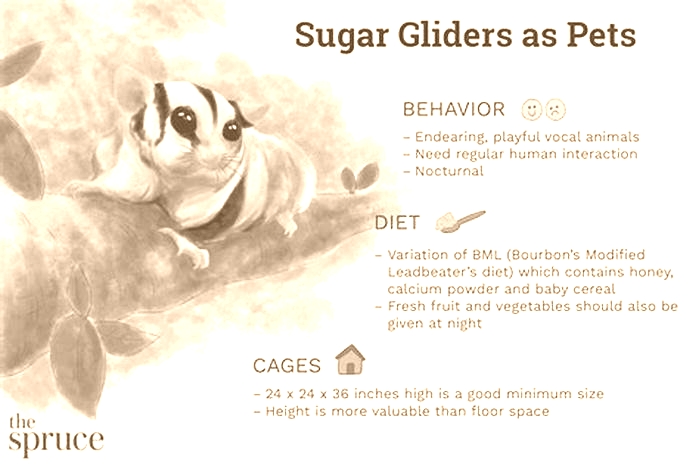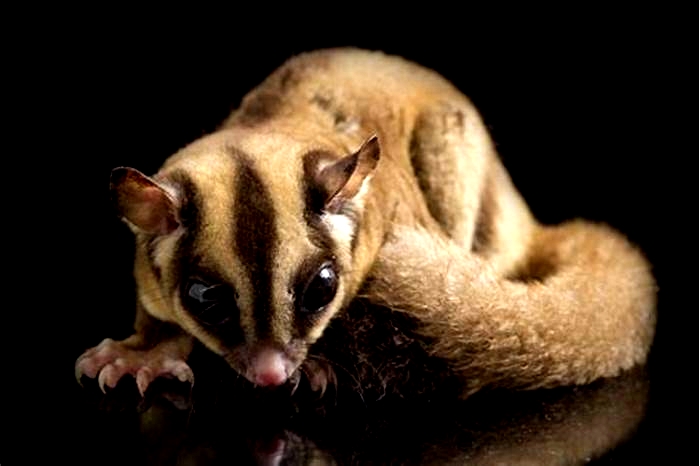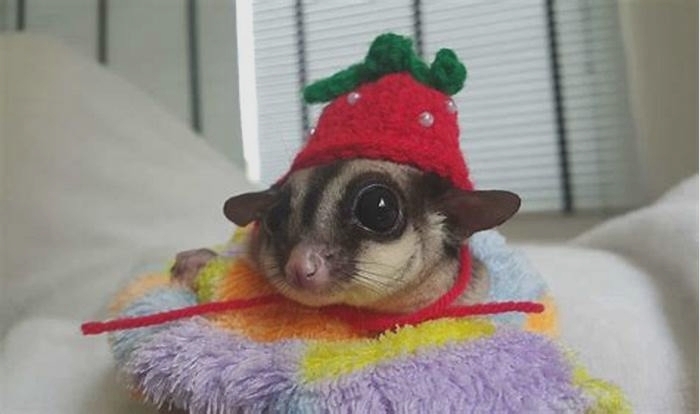What is the most common problem encountered with sugar gliders
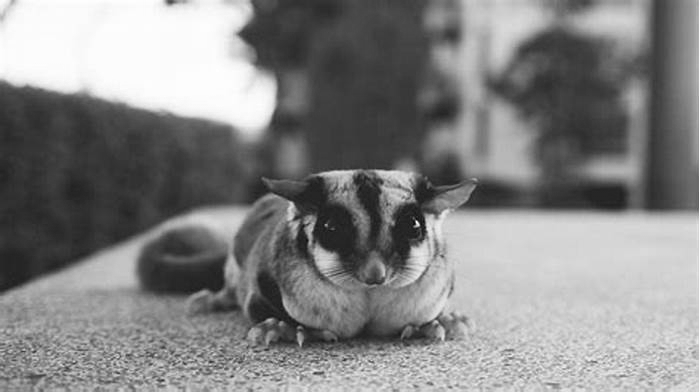
Common Health Issues in Sugar Gliders Preventions & Treatments
Health status is very important in both humans and animals, sugar gliders are not left out ever since their unique appearance, captivating gliding abilities, and sociable nature have made them popular pets worldwide.
However, like any other pet, sugar gliders can experience various health issues. As a responsible sugar glider owner, it is essential to understand these health problems, their causes, prevention, and treatment methods.
By familiarizing ourselves with these challenges, we can better equip ourselves to provide the best possible care for this delightful creature, ensuring they live long and vibrant lives by our side.
Now let us explore the various health issues in Sugar Gliders. Ensure you read through and do not miss anything and I am not kidding.
1. Nutritional Imbalances
a. Calcium Deficiency
One of the most common nutritional issues in sugar gliders is calcium deficiency, also known as nutritional secondary hyperparathyroidism or metabolic bone disease. This condition occurs when sugar gliders do not receive adequate calcium in their diet, leading to weak bones, fractures, and even paralysis.
Prevention: To prevent calcium deficiency, provide a balanced diet with adequate calcium and phosphorus levels. Fresh fruits, vegetables, and a source of protein, such as insects or commercial sugar glider pellets, should be included. Calcium and vitamin D3 supplements are also recommended.
Treatment: If your sugar glider shows signs of calcium deficiency, consult a veterinarian immediately. Treatment may include calcium injections, oral calcium supplements, and changes to the diet.
b. Malnutrition
Malnutrition is another common issue in sugar gliders, often resulting from an unbalanced diet. Symptoms include weight loss, lethargy, and a weakened immune system.
Prevention: Ensure your sugar glider receives a well-rounded diet, including fresh fruits, vegetables, and protein sources. Avoid feeding them high-fat or high-sugar treats, as these can contribute to malnutrition.
Treatment: If you suspect your sugar glider is malnourished, consult a veterinarian for guidance on adjusting their diet and providing appropriate supplementation.
2. Parasitic Infections
Sugar gliders can be susceptible to both internal and external parasites, including mites, fleas, and intestinal worms. These parasites can cause itching, hair loss, weight loss, and gastrointestinal issues.
Prevention: Regular veterinary check-ups can help detect and treat parasites early. Keep your sugar gliders living environment clean and use parasite preventatives recommended by your veterinarian.
Treatment: If your sugar glider is diagnosed with parasites, your veterinarian will prescribe appropriate medications to eliminate the infestation. Follow your veterinarians instructions closely and maintain a clean living environment to prevent reinfection.
3. Dental Disease
Dental issues, such as tooth decay and gum disease, are common in sugar gliders. These problems can lead to pain, difficulty eating, and infection.
Prevention: Regular dental check-ups with a veterinarian experienced in sugar glider care are essential. Provide a balanced diet and appropriate chew toys to help maintain dental health.
Treatment: If dental disease is diagnosed, your veterinarian may recommend dental cleanings, tooth extractions, or other treatments to address the issue. Follow your veterinarians recommendations and maintain proper dental care at home.
4. Respiratory Infections
Respiratory infections can occur in sugar gliders due to bacteria, viruses, or fungi. Symptoms include sneezing, coughing, nasal discharge, and difficulty breathing.
Prevention: Maintain a clean living environment for your sugar glider and avoid exposing them to other pets or animals that may carry infections. Consult your veterinarian if you notice any signs of respiratory distress.
Treatment: If your sugar glider is diagnosed with a respiratory infection, your veterinarian will prescribe appropriate medications, such as antibiotics, antifungal medications, or anti-inflammatory drugs. Ensure your sugar glider completes the full course of treatment and monitor them closely for signs of improvement or worsening symptoms.
5. Stress-Related Issues
Sugar gliders are prone to stress, which can lead to various health issues, such as self-mutilation, over-grooming, and a weakened immune system.
Prevention: Provide a comfortable and secure living environment for your sugar glider. Ensure they have plenty of space to explore, climb, and hide. Regularly interact with your sugar glider to help them bond with you and feel more secure. If you notice signs of stress, consult your veterinarian for advice on how to help your pet.
Treatment: Treatment for stress-related issues may include environmental changes, increased social interaction, or medication to help manage anxiety. Your veterinarian will recommend an appropriate course of action based on your sugar gliders specific needs.
6. Trauma and Injuries
Sugar gliders are active animals that love to climb and jump. However, this can sometimes lead to accidents and injuries, such as broken bones, sprains, or cuts.
Prevention: Ensure your sugar gliders living environment is safe and free of hazards. Provide appropriate climbing structures and exercise opportunities. Supervise your sugar glider during playtime to prevent accidents.
Treatment: If your sugar glider sustains an injury, seek veterinary care immediately. Treatment may include pain management, wound care, or surgery, depending on the severity of the injury.
7. Reproductive Issues
Female sugar gliders can develop reproductive issues, such as uterine infections or complications during pregnancy. Male sugar gliders can suffer from testicular torsion or infections.
Prevention: Regular veterinary check-ups can help detect any reproductive issues early. If you do not plan to breed your sugar glider, consider spaying or neutering to prevent potential health problems.
Treatment: Treatment for reproductive issues may include antibiotics, hormone therapy, or surgery, depending on the specific issue. Consult your veterinarian for guidance on the best course of action.
8. Hind Leg Paralysis
Hind leg paralysis is a condition that can affect sugar gliders, causing weakness or complete loss of function in their hind legs. This can be due to trauma, nutritional imbalances, or genetic factors.
Prevention: Providing a balanced diet and a safe living environment can help prevent hind leg paralysis caused by nutritional imbalances or trauma. Regular veterinary check-ups can help identify any potential issues early on.
Treatment: Treatment for hind leg paralysis will depend on the underlying cause. Your veterinarian may recommend dietary changes, physical therapy, or other treatments based on the specific issue.
9. Self-Mutilation
Self-mutilation is a behavior sometimes seen in sugar gliders, where they chew or bite at their own skin, often causing significant damage. This can be due to stress, boredom, or underlying medical issues.
Prevention: Provide a stimulating and secure environment for your sugar glider, with plenty of opportunities for play and social interaction. Monitor your sugar glider for signs of stress and consult your veterinarian if you notice any concerning behaviors.
Treatment: Treatment for self-mutilation may include addressing the underlying cause, such as stress reduction or medical treatment for infections. In severe cases, your veterinarian may recommend an Elizabethan collar or other protective measures to prevent further self-inflicted injury.
10. Fungal Infections
Sugar gliders can develop fungal infections on their skin or in their respiratory system. Symptoms may include skin lesions, hair loss, or respiratory distress.
Prevention: Maintain a clean living environment for your sugar glider and monitor them for signs of illness. Regular veterinary check-ups can help detect and treat fungal infections early.
Treatment: If your sugar glider is diagnosed with a fungal infection, your veterinarian will prescribe appropriate antifungal medications. Follow your veterinarians instructions closely and maintain a clean living environment to prevent reinfection.
11. Obesity
Obesity in sugar gliders can lead to various health issues, including heart disease, diabetes, and joint problems.
Prevention: Monitor your sugar gliders weight and adjust their diet and exercise routine accordingly. Provide opportunities for physical activity, such as climbing branches and exercise wheels.
Treatment: If your sugar glider becomes overweight, consult your veterinarian for guidance on implementing a weight loss plan, which may include dietary changes and increased exercise.
12. Eye Infections and Injuries
Sugar gliders can develop eye infections or sustain eye injuries due to trauma or exposure to irritants. Symptoms may include redness, swelling, discharge, or changes in vision.
Prevention: Keep your sugar gliders living environment clean and free of potential hazards. Regular veterinary check-ups can help detect and treat eye issues early.
Treatment: Treatment for eye infections or injuries may include antibiotic or anti-inflammatory eye drops, pain management, or surgery, depending on the specific issue. Consult your veterinarian for guidance on the best course of action.
13. Preventive Care and Veterinary Visits
Regular veterinary check-ups and preventive care are essential for maintaining your sugar gliders health. Your veterinarian can help detect and treat potential health issues early, provide guidance on proper nutrition and care, and administer necessary vaccinations or parasite preventatives.
Recommendation: Schedule annual or biannual veterinary check-ups for your sugar glider, or more frequently if recommended by your veterinarian. Establish a relationship with a veterinarian experienced in sugar glider care to ensure your pet receives the best possible care.
Wrapping up
Being aware of these common health issues in sugar gliders can help you take the necessary steps to prevent and treat them. Regular veterinary care, a balanced diet, and a clean and safe living environment are crucial for maintaining your sugar gliders health and happiness.
By staying informed and proactive, you can help ensure your sugar glider lives a long, healthy, and fulfilling life as your beloved awesome pet.
Sugar Glider Eye Infection: All You Need To Know
One of the most common health problems faced by sugar gliders is eye infections. There are a number of different causes of sugar glider eye infections, but the most common is bacteria.
Sugar glider eye infections can be treated with a number of different methods, but the most effective is antibiotics.
Eye infection is a common sugar glider health problem
One of the most common health problems seen in sugar gliders is eye infection. The symptoms of eye infection include redness, discharge, and increased tearing. If left untreated, eye infections can lead to serious complications.
Fortunately, eye infections are relatively easy to treat with antibiotics. However, it is important to catch the infection early and get your sugar glider to the vet as soon as possible. With proper treatment, most sugar gliders make a full recovery from eye infection.
Most common eye infections include:
Corneal Lipidosis
Corneal Lipidosis is an accumulation of lipids in the cornea, which is the clear outer layer of the eye. This condition can be caused by a poor diet (a diet that is high in fat).
This infection appears as a yellowish or white film on the surface of the eye.
Conjunctivitis
Conjunctivitis is an inflammation of the conjunctiva, which is the thin, transparent layer that covers the white part of the eye. This condition can be caused by a bacterial or viral infection, allergies, or irritants such as dust or smoke.
Symptoms of conjunctivitis include redness, discharge, and increased tearing.
Glaucoma
Glaucoma is an increase in pressure inside the eye. This condition can be caused by a blockage in the drainage system of the eye, inflammation, or a buildup of fluid in the eye.
Symptoms of glaucoma include squinting and a white haze in the pupil. In order to be diagnosed with glaucoma, your vet will need to perform a complete an exam inside the eye.
Retrobulbar Abscess
A retrobulbar abscess is a collection of pus behind the eye. This condition is usually caused by a gum or tooth infection that has spread to the eye.
If you feed your glider a lot of sugar, there is a greater chance that they will develop this eye infection due to dental decay.
Signs of sugar glider eye infection
The most common sign of eye infection is squinting. Your sugar glider may also have runny eyes or a white haze in the pupil. If you notice any of the signs mentioned below, take your glider to the vet as soon as possible.
Squinting
Squinting appears when your glider tries to protect their eye from light. Sugar gliders are nocturnal animals, so they are sensitive to bright light. However, if your glider is squinting during the day, it may be a sign of eye infection.
Redness
Redness in the eye is another common sign of infection. It appears when the blood vessels in the eye become dilated and it one of the first signs of an eye problem.
Increased tearing
If your glider has watery eyes, it may be a sign of infection. Sugar gliders produce tears to keep their eyes moist and lubricated. However, if the eyes are producing too many tears, it may be a sign of infection.
White haze in pupil
A white haze in the pupil is another sign of glaucoma. This symptom appears when there is an increase in pressure inside the eye.
Runny eyes
Runny eyes is a symptom that is often caused by allergies or irritants such as dust or smoke. Runny eyes are when the eyes produce too many tears and the tears overflow.
Rubbing The Eye
Sugar gliders will groom themselves frequently, but if they are excessively rubbing their eyes, it may be a sign of a problem.
Sugar glider eye infection treatment
Some methods to treat a sugar glider eye infection include:
Cleaning the eye
The first step to treating an eye infection is to clean the eye. This can be done with a cotton swab soaked in warm water. Gently wipe the cotton swab around the eye, being careful not to touch the eyeball.
Applying a warm compress
Another way to clean the eye is to apply a warm compress. This can be done by soaking a clean cloth in warm water and then applying it to the eye for a few minutes.
Using an antibiotic ointment
Antibiotic ointment can be used to help clear up the infection. Apply a small amount of ointment to a cotton swab and then gently apply it to the eye.
Using an eye drop
If the infection is more severe, your vet may prescribe an eye drop. Apply the drops as directed.
Surgery
In some cases, surgery may be necessary to remove the infected tissue. This is typically a last resort and is only done in severe cases.
How do you treat a sugar glider abscess?
An abscess is a pocket of pus that forms when bacteria enters the body and the immune system responds by walling off the infection. Sugar gliders are susceptible to abscesses because of their high metabolism and their grooming habits. If an abscess is not treated promptly, it can become life-threatening.
One of the most effective treatments for dealing with sugar glider abscesses that do NOT involve a tooth is to insert a drain when the abscess is drained. This allows the infection to drain out completely and prevents it from recurring. Also, using an antibacterial soap (such as Betadine) or an antiseptic solution (such as iodine) around the opening of the abscess helps to speed healing and prevent infection.
If the abscess is located near a tooth, the tooth may need to be extracted. In this case, it is important to seek veterinary care immediately. Untreated, an abscess can cause serious health problems, including sepsis (a potentially life-threatening condition caused by infection). With prompt and proper treatment, most sugar gliders make a full recovery.
How to Decide Whether to Have Surgery on a Sugar Glider
If youre facing a decision about whether to have surgery on your sugar glider, there are a few things to consider. First, what is the prognosis for your pet without surgery? If the condition is not life-threatening and there is a good chance for recovery with medical treatment, surgery may not be necessary.
Second, what are the risks of surgery? While all surgeries carry some risk, complications are rare in healthy sugar gliders. Finally, what is the cost of surgery? Surgery can be expensive, so be sure to consider all the costs involved before making a decision.
With careful consideration, you can make the best decision for your beloved sugar glider.
Can a sugar glider go blind?
Yes, sugar gliders can go blind or can suffer from partial blindness. The most common cause of blindness in sugar gliders is a high fat diet, a diet that mainly consists of mealworms and seeds.
Can sugar gliders have amoxicillin?
Amoxicillin is a broad-spectrum antibiotic that is used to treat bacterial infections in humans and animals. It is safe for sugar gliders to take amoxicillin when prescribed by a veterinarian. Amoxicillin is available in oral and injectable forms. The oral form is the most common and is typically given twice daily.
Conclusion
Sugar gliders are prone to eye infections due to their high metabolism and grooming habits. If you suspect your sugar glider has an eye infection, the first step is to consult your vet. There are several signs to look for, and treatment typically involves cleaning the eye and using an antibacterial soap or antiseptic solution. In some cases, surgery may be necessary. With prompt and proper treatment, most sugar gliders make a full recovery.


